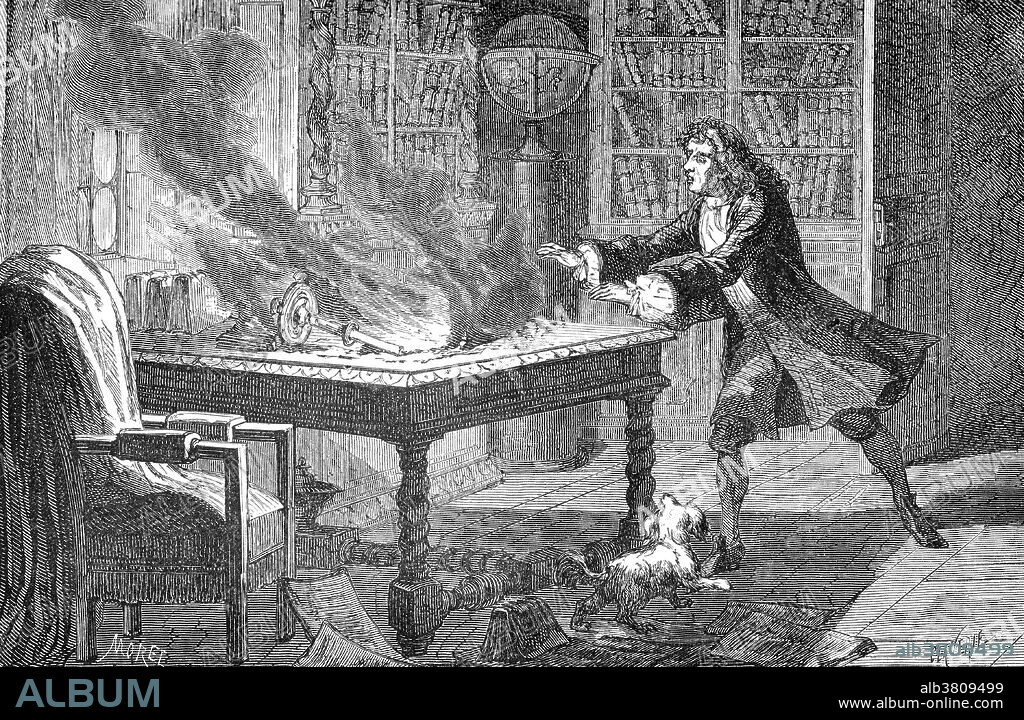alb3809499
Isaac Newton's Lab Fire, 18th Century

|
Zu einem anderen Lightbox hinzufügen |
|
Zu einem anderen Lightbox hinzufügen |



Haben Sie bereits ein Konto? Anmelden
Sie haben kein Konto? Registrieren
Dieses Bild kaufen

Titel:
Isaac Newton's Lab Fire, 18th Century
Untertitel:
Siehe automatische Übersetzung
Diamond was, according to legend, Newton's favorite dog, which, by upsetting a candle, set fire to manuscripts containing his notes on experiments conducted over the course of 20 years. Newton is said to have exclaimed: "O Diamond, Diamond, thou little knowest the mischief thou hast done." According to another account, Newton simply left a window open when he went to church, and the candle was knocked over by a gust of wind. Isaac Newton (December 25, 1642 - March 20, 1727) was an English physicist, mathematician, astronomer, natural philosopher, alchemist, and theologian. His monograph Philosophae Naturalis Principia Mathematica, published in 1687, lays the foundations for most of classical mechanics. In this work, Newton described universal gravitation and the three laws of motion, which dominated the scientific view of the physical universe for the next three centuries. The Principia is generally considered to be one of the most important scientific books ever written. Engraving from "Vies des savants illustres" by Louis Figuier.
Bildnachweis:
Album / Science Source
Freigaben (Releases):
Model: Nein - Eigentum: Nein
Rechtefragen?
Rechtefragen?
Bildgröße:
4650 x 3030 px | 40.3 MB
Druckgröße:
39.4 x 25.7 cm | 15.5 x 10.1 in (300 dpi)
Schlüsselwörter:
18. JAHRHUNDERT • 18. JH. • ALCHEMIE • ASTRONOMIE • BERÜHMT • BERÜHMTE PERSÖNLICHKEIT • DIFFERENTIALRECHNUNG • EUROPAEER (F M) • EUROPAEER • EUROPÄER (F M) • EUROPÄER • EUROPÄISCH • FARBENLEHRE • FEUER • FEUER, VIER ELEMENTE • ILLUSTRATION • ILLUSTRATIONS • LABOR • LABORATORIUM • MANN • NATURPHILOSOPH • NATURWISSENSCHAFTLER • NOTABEL • PERSON • PERSöNLICHKEITEN • PERSÖNLICHKEITEN • PROMINENZ • SPIEGELTELESKOP • STEIN DER WEISEN • VIER ELEMENTE: FEUER • WISSENSCH.: ASTRONOMIE • WISSENSCH.: LABORATORIUM • WISSENSCHAFTLER • WISSENSCHAFTLICH
 Pinterest
Pinterest Twitter
Twitter Facebook
Facebook Link kopieren
Link kopieren Email
Email
